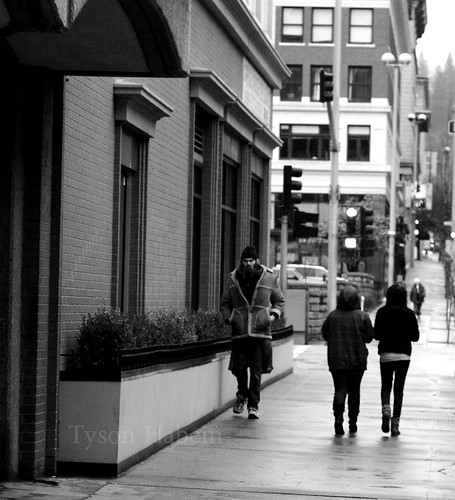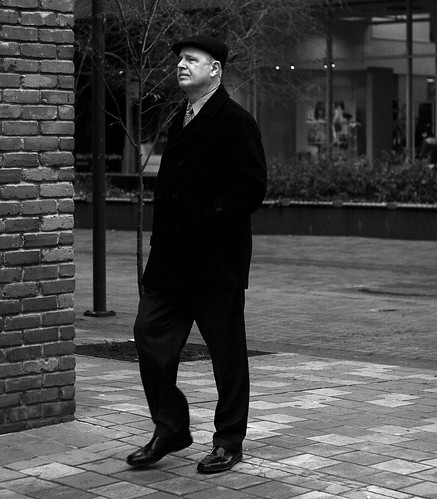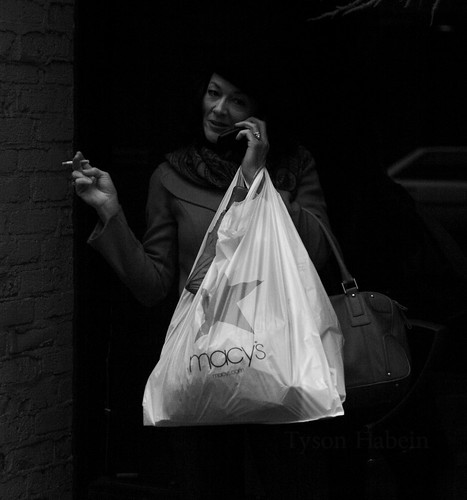Awhile back I was talking to someone I know who is in their first year of college. She was lamenting the fact that she wasn't enjoying the journalism program at her school and didn't know what else to go into. I asked her what sort of classes she was taking that she did enjoy.
She said she was enjoying her art classes and some design-type classes that she was taking at the moment. Immediately, she followed this statement with a qualifier: "I don't want to do advertising, though."
This piqued my curiosity. As someone who intends to work in the realm of advertising photography, I wanted to know why she would be so adverse to the field as a potential career.
"Advertising is just so evil. I mean, the way they target people."
This brings up an interesting idea that has become more prevalent in the last 15-20 years: "Advertising is evil."
While I think blanket statements such as this almost always have poor reasoning behind them, the idea of 'advertising as evil' is something that has become fairly standard amongst a younger generation of consumers. I certainly do have my issues with the operating standards of many advertisers (corporations, and the companies that produce their ads, can at times be flawed, as they are run by people), but I think I am in the minority of a younger population in that I don't find advertising abhorrent.
The idea that targeted advertising is evidence of evil is an odd one to me. As a business, the name of the game is minimizing costs while maximizing income. This is the line that separates the profitable from the failing. Furthermore, targeted advertising is something that allows the consumer to sort through the much of the daily commercial world.
When I get up in the morning, I see advertisements in between segments on morning TV. As I leave the house, I hear advertisements on the radio in my car. As I drive, I see advertisements on billboards, the sides of buildings, and other vehicles. When on the computer, almost every webpage has advertisements of some sort. With advertising everywhere, isn't it useful for a consumer to know that, at least a small portion, of those ads are specifically chosen for them? Imagine a world in which all of the advertisements you saw were aimed at you. There would be fewer ads, to be sure, because the ads that were present would be far more effective. Advertising would be less scattershot and more pinpoint. This relieves me, as the consumer, of the overload that is so often complained about. This relieves me, as the business owner, of the massive cost of 20 ads. I can put out just 1.
The idea of evil in this likely stems from the ability to target. In order to generate a targeted ad, the advertiser has to have information about you. They have to have access to your Facebook profile and all the information therein. They have to know you are a 20 something who likes video games and beef jerky (but then, who doesn't?). This seems to still invade the sense of privacy that many people have held on to.
Privacy, or perhaps the desire for it, is what makes advertising evil. But in our modern world we've all but tossed privacy out the window. Your average teenager has a Myspace account, a Facebook account, a Twitter account, a traceable cell phone, a Google search history, an Amazon buying history, etc. etc. etc. For a new generation of consumers, the idea of privacy is, at best, an illusion.
But the fact that the perceived evil of advertising may be an antiquated notion is irrelevant. If there is one thing that a lifetime of looking at advertising has taught me, it is that perception is everything. Perception is truth. And if advertising that tries to sell you something is perceived as evil, then it is, at least in the eyes of the consumers you are attempting to reach.
The answer then, is to become smarter in how we advertise. A targeted sales pitch is no longer an option. Instead, we have to ingrain a brand in the day to day lives of our targeted consumers. We don't show the product and simply tell you how much it is and where you can get it. We show you the product in the hands of someone you admire who is having an amazing time, and oh, by the way... they just happen to be using this product.
It's not a hard sell that works anymore, it's not a soft sell that works, it's a non-sell. It's a sale by proxy. We buy products because they are a perceived part of the lifestyle we want to lead.
Perhaps as photographers, we can all learn something more from advertising than current trends and lighting styles. Perhaps we can all learn something from those photographers who aren't advertising in the same way anymore -- those photographers whose second job has become promoting themselves as a part of a larger community. Certainly, there is a magnanimous desire to help the community involved in this for most of these individuals. But no one can deny that people like David Hobby and Chase Jarvis have benefited greatly from their role in the photographic community.
The reason is this: when an art director looks to what is going on in the world, they are swayed by those who have great pull amongst a large group of people. If 10,000 people fawn over the work of Chase Jarvis, it must have some resonance with consumers.
At a certain point, to anyone who is interested in the field, Chase Jarvis becomes a household name. It's like a celebrity endorsement, except the photographer becomes their own celebrity.
As photographers who want to work in advertising, we have to understand advertising. We have to become advertising. In a modern era of peer networking, targeted advertising, and group thinking, advertising isn't evil. Advertising is us.






